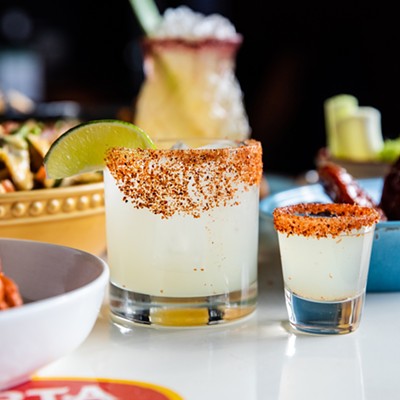Support Us
Houston's independent source of
local news and culture
account
- Welcome,
Insider - Login
- My Account
- My Newsletters
- Contribute
- Contact Us
- Sign out
[
{
"name": "Related Stories / Support Us Combo",
"component": "11591218",
"insertPoint": "4",
"requiredCountToDisplay": "4"
},{
"name": "Air - Billboard - Inline Content",
"component": "11591214",
"insertPoint": "2/3",
"requiredCountToDisplay": "7"
},{
"name": "R1 - Beta - Mobile Only",
"component": "12287027",
"insertPoint": "8",
"requiredCountToDisplay": "8"
},{
"name": "Air - MediumRectangle - Inline Content - Mobile Display Size 2",
"component": "11591215",
"insertPoint": "12",
"requiredCountToDisplay": "12"
},{
"name": "Air - MediumRectangle - Inline Content - Mobile Display Size 2",
"component": "11591215",
"insertPoint": "4th",
"startingPoint": "16",
"requiredCountToDisplay": "12"
}
,{
"name": "RevContent - In Article",
"component": "12527128",
"insertPoint": "3/5",
"requiredCountToDisplay": "5"
}
]
M is for Monday and M is for martini, so, obviously, martinis are for Mondays. Some truths are self-evident.
Mondays at 7 p.m. at Anvil Bar & Refuge are wonderful because hardly anyone is there. The weekend drinkers spent their money already, so it’s possible to saunter in, have the place mostly to yourself and bother the bartenders with lots of cocktail questions. Bothering bartenders with questions is one of my favorite things. They good-naturedly humor me. Hopefully I’m easier to deal with than a crowd of people four deep. You never know, though.
I go to Anvil to learn. Initially, that was a more formal process. I received the brunt of my initial cocktail and spirits education there when Bobby Heugel led a series of classes that covered everything from gin to whiskey to liqueurs. It was me and a group of 70 or so regulars, all on our way to becoming cocktail nerds. (No regrets.)
Some of my classmates even became bartenders. I thought about becoming a bartender. My path went differently, though. I just write about bartenders now.
I distinctly remember Heugel declaring during gin class, “Olives have no place in a martini!” So, I was surprised to read recently about one being offered with an olive in it. I teased Heugel about the olives, and he suggested it had been too long since I’d been in for a martini. He had a point there.
Green olives do not a dirty martini make. At Anvil, the Castellano olives are specifically for the Japanese martini and there’s not only no brine included, the olive itself rides high above the liquid on a toothpick. It looks a little lonely up there. Sometimes being alone is okay, though, as long as there's a good bartender to talk to.
Japanese Martini at Anvil Bar & Refuge
General manager Terry Williams broke the Great Anvil Olive Embargo after a trip to Japan, where he was inspired by the martini technique and theory. The Japanese martini is almost straight gin, so it relies on excellent cocktail technique to end up at the right temperature. It's best to stick with the brands listed, since different gins can have all sorts of botanicals that may not work as well for this particular martini.
2 1/2 ounces of Tanqueray gin
3/4-ounce Noilly Prat Dry Vermouth
One Castellano olive skewered on a cocktail pick
One slice of lemon peel
Fill a bar mixing glass with cubed ice and stir to “season” the ice with the vermouth. Strain most of the vermouth into a "sidecar." (A Glencairn glass works nicely.) Add the gin to the seasoned ice and stir until very cold, about 15 to 20 seconds. Double-strain and serve in a cocktail coupe. Garnish with the olive and twist the lemon peel to express the oil over the martini. Discard the peel and serve the martini and sidecar of vermouth. The drinker can add more vermouth to the drink if desired, but it's also interesting to sip on its own.
KEEP THE HOUSTON PRESS FREE...
Since we started the Houston Press, it has been defined as the free, independent voice of Houston, and we'd like to keep it that way. With local media under siege, it's more important than ever for us to rally support behind funding our local journalism. You can help by participating in our "I Support" program, allowing us to keep offering readers access to our incisive coverage of local news, food and culture with no paywalls.
Phaedra Cook
Contact:
Phaedra Cook
Trending Food & Drink
- Houston’s 5 Best Weekend Food Bets: A Pig Roast, Paella and Backyard BBQ
- Houston Restaurant Weeks: Menus Part Two
- Upcoming Houston Food Events: A Summer Sushi Experience and American Cocktail Storytime
-
Sponsored Content From: [%sponsoredBy%]
[%title%]

Don't Miss Out
SIGN UP for the latest
food & drink
news, free stuff and more!
Become a member to support the independent voice of Houston
and help keep the future of the Houston Press FREE
Use of this website constitutes acceptance of our
terms of use,
our cookies policy, and our
privacy policy
The Houston Press may earn a portion of sales from products & services purchased through links on our site from our
affiliate partners.
©2024
Houston Press, LP. All rights reserved.




